EDITOR’S NOTE: Traveleater Sep Simborio shares with us twenty Bulgarian food favorites to try on your next visit to Sofia.
There are a few things that first come to mind about Bulgaria—drunken holiday parties at Black Sea resorts, roses, and hot springs. But there is one little tidbit that perhaps most folks do not know: Bulgaria is the oldest country in Europe, making it all the more fascinating.
Countries in Eastern Europe are awfully underrated both for foodies and travelers alike. But when it is the oldest country on the continent, it’s most definitely worth a visit. Tons of history has turned Bulgaria into a destination every Traveleater would want to experience.
Yes, Bulgaria is old. In fact, it’s so old that it has gone through Thracian, Persian, Celtic, and Roman rule even before hitting the Dark Ages. It’s so old that it has been that the country hasn’t changed its name since the 7th century when it was first discovered by Khan Asparuh. It is so old that it is the birthplace of the bacteria responsible for creating delicious and tangy yogurt.
All these, combined with a host of other elements, form a massive influence on what Bulgarian food is all about.
BULGARIAN FOOD QUICK LINKS
If you’re planning a trip to Sofia and want to really learn about Bulgarian dishes, then you may be interested in joining a Bulgarian food or wine tour.
TOURS & OTHER SERVICES
- Bulgarian Food Tours: Food and Wine/Drinking Tours in Bulgaria
- eSIM: Bulgaria eSIM
Save This on Pinterest!
No time to read this article on traditional Bulgarian foods? Click on the save button and pin it for later!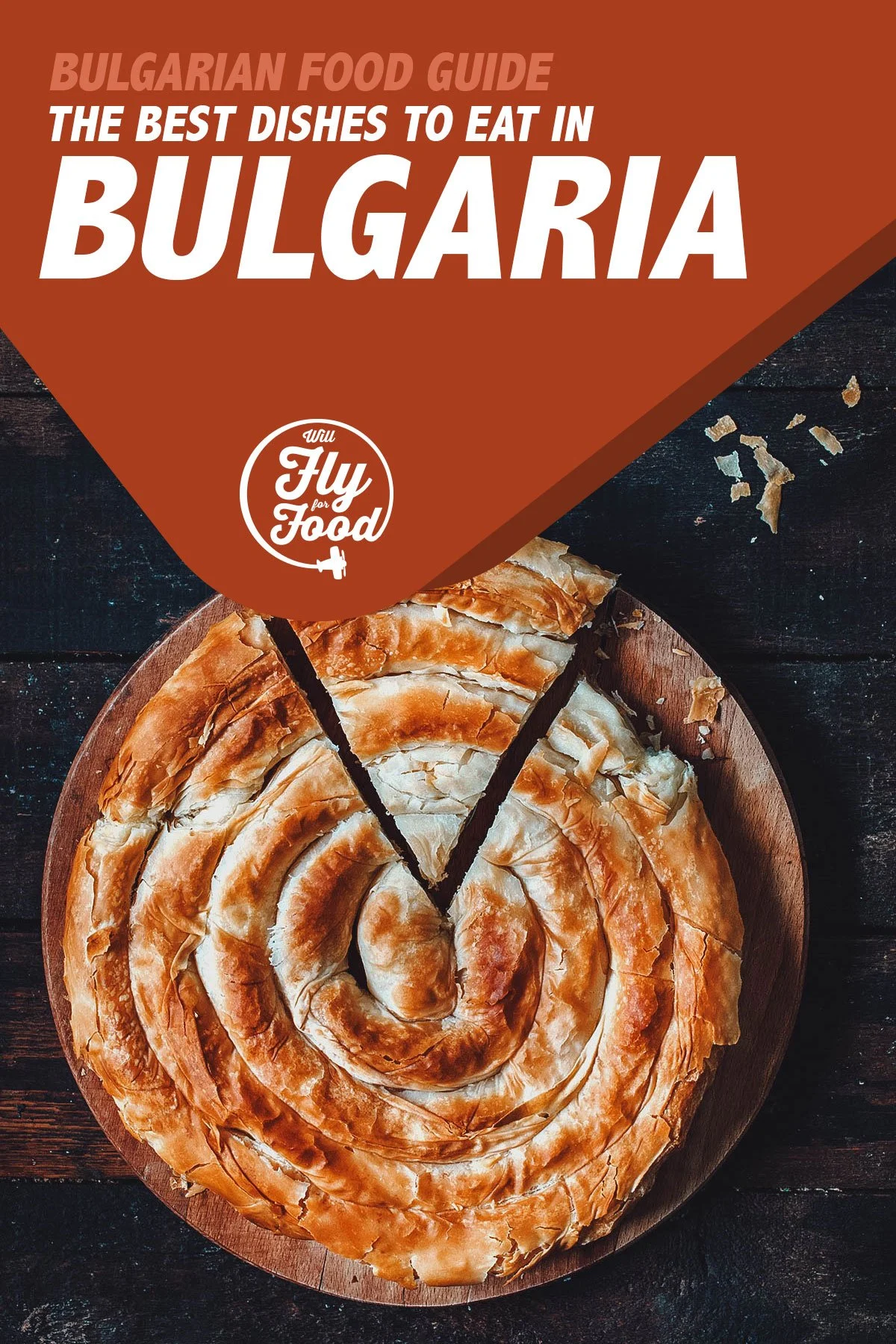
Photo by uroszunic
WHAT IS TRADITIONAL BULGARIAN FOOD?
With a long and rich history to back it up, Bulgarian cuisine is diverse. Having the most experience compared to its neighbors in the Balkan region, traditional Bulgarian food is recognized as a representation of Southeast European cuisine, with geography playing an important role in the country’s dishes.
Popular Bulgarian food is mostly made up of cheese, yogurt, and vegetables. And while Bulgarian cuisine is quite similar to Greek and Turkish food, it has its own unique take on the dishes. They are customarily fresh and hearty with a variety of mild spices. Commonly used proteins are chicken, lamb, and pork, although seafood and veal are also popular depending on the region.
A tasty amalgamation of Balkan, Mediterranean, and Middle Eastern cuisines, traditional Bulgarian cuisine is perfect for Traveleaters who are planning to go on a food adventure in Southeastern Europe.
THE BEST OF TRADITIONAL BULGARIAN CUISINE
This Bulgarian food guide has been organized by category to make it easier to digest. Click on a link to jump to any section of the guide.
STARTERS / SIDES
1. Mish-Mash
Mish-mash is a Bulgarian salad made with fresh cut vegetables, eggs, and sirene cheese, a type of Balkan brined cheese similar to feta. It’s typically made with tomatoes, onions, and peppers though it can be made with other vegetables as well like eggplant, okra, carrots, scallions, and garlic. It’s seasoned simply with black pepper and salt and often garnished with freshly cut parsley.
Mish-mash is typically a spring dish and commonly served warm as an appetizer or main dish, usually with freshly baked bread.
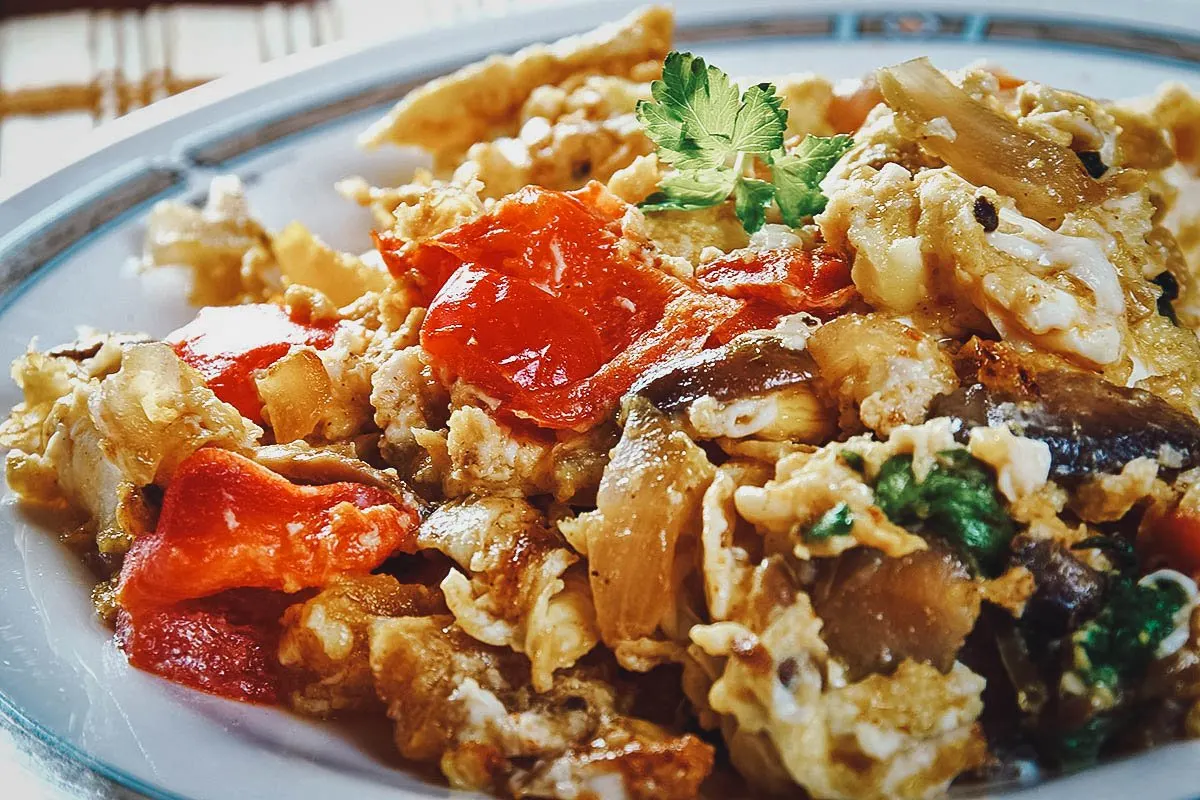
Photo by fanfon
2. Shopska Salad
Nothing starts Bulgarian meals better than a fresh salad, and Bulgarians know this for a fact. Hailing from the Shopluk region, the shopska salad is a cold salad also popular throughout Southeastern Europe. It is believed to have been invented in the 1950s as a way of promoting tourism by the then socialist party to showcase fresh local ingredients in Bulgarian cuisine.
Considered a national dish, the most traditional recipe you’ll find in a Bulgarian cookbook makes use of cucumbers, tomatoes, onions or scallions, raw or roasted peppers, parsley, and sirene cheese. The ingredients are refrigerated, so the dish is served cold before being sliced, salted, and tossed with a light dressing of sunflower oil and an occasional splash of vinegar.
Shopska salad is best paired with a meat dish or enjoyed as a light meal during warm summer days.
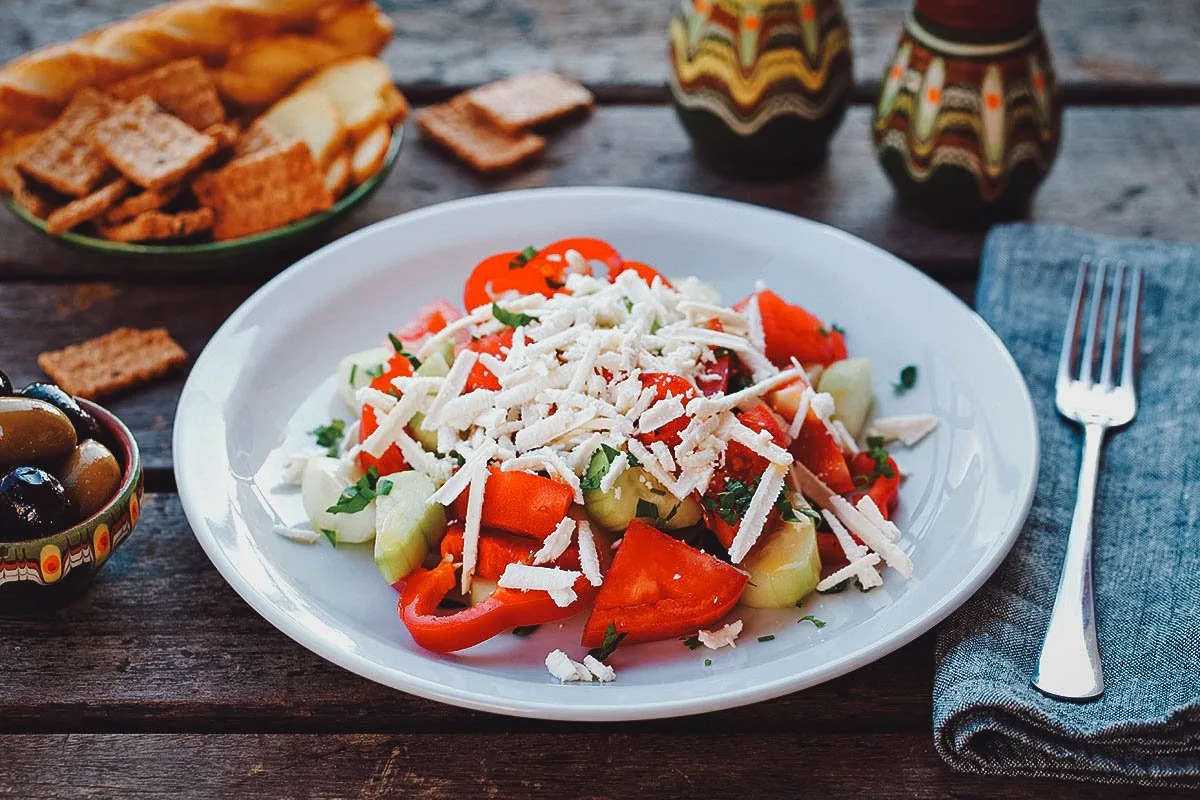
Photo by KrasiKanchev
3. Snezhanka
Snezhanka literally translates to “Snow White” of the Disney animated film fame. It’s a cold salad named as such due to its mostly white color from its main ingredient: strained yogurt. Other ingredients include chopped cucumber, garlic, olive oil, salt, and dill. It’s basically a salad version of Greek tzatziki.
For a more personalized approach, walnuts, roasted peppers, and chopped parsley can be added as toppings. It can be served as an appetizer, side dish, or a pita bread dip. It can also be eaten as part of a meze platter and traditionally complemented with alcoholic drinks.
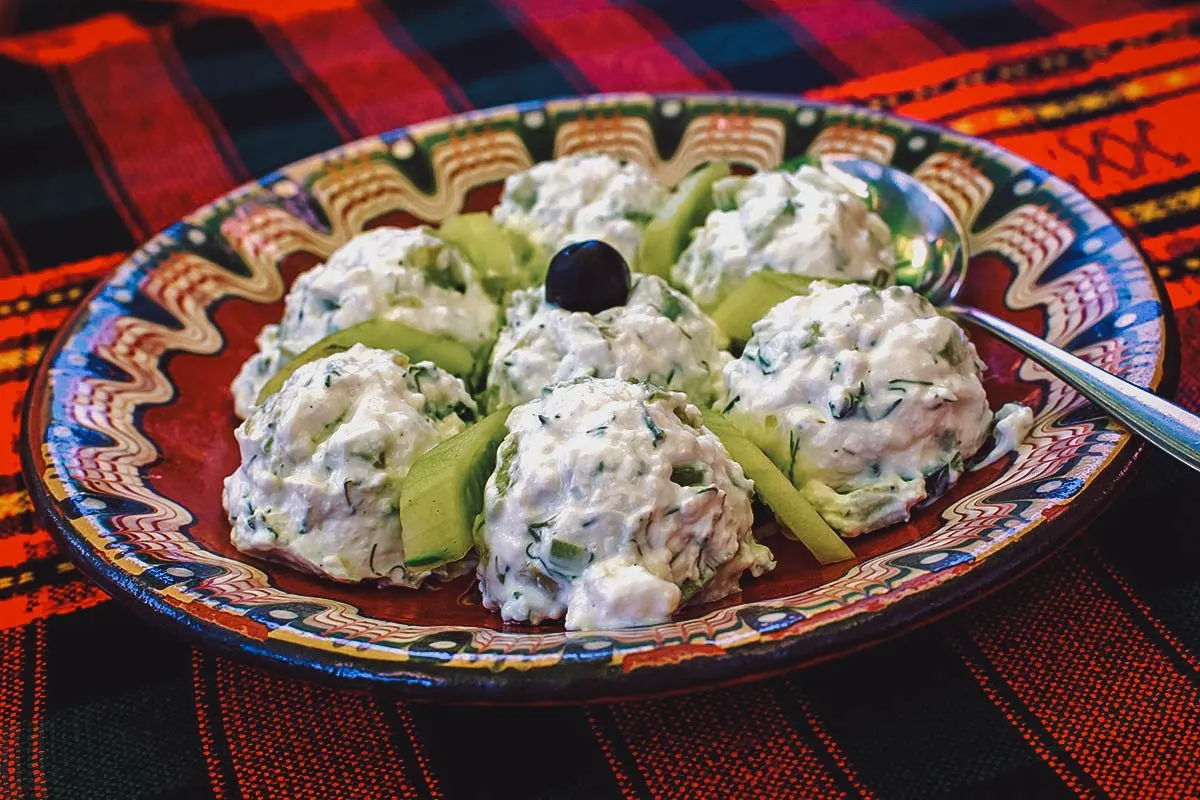
Photo by Kisa_Markiza
4. Kiselo Mlyako
Bulgaria’s culinary pride and joy comes in the form of sour milk, or what the world knows as yogurt. This fermented dairy product is a staple in many countries, adding pizzazz to various dishes or as a standalone side dish. To fully understand how this traditional Bulgarian food makes Bulgarians proud to be Bulgarians, one must know its origins.
Kiselo mlyako, a.k.a Bulgarian yogurt, is recognized as the progenitor of this sour and creamy dish that people enjoy today. While it is believed to have originated from Turkey, a closer look has proven that this isn’t the case.
A young Bulgarian microbiologist named Stamen Grigorov discovered the bacteria responsible for fermenting milk and turning it into the tasty yogurt people love eating today. A rod-shaped bacterium called Lactobacillus bulgaricus is one of its kind that only comes from Bulgaria, giving kiselo mlyako the Bulgarian food title it deserves: the OG yogurt.
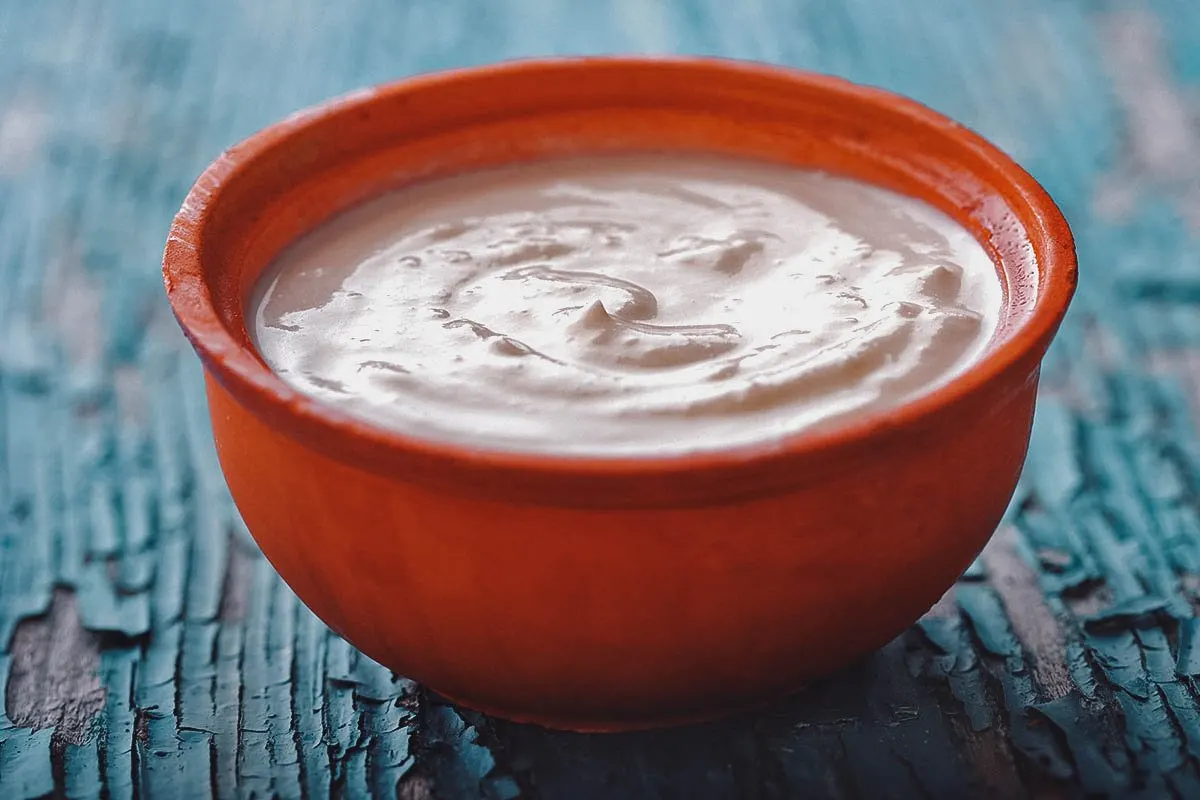
Photo by livfriis
5. Sirene
In a country rich in dairy products, Bulgaria does have its own cheese. And while feta cheese is considered as one of the most popular, the country also has its very own version. Called sirene, this Bulgarian white cheese is made with cow, sheep, or goat milk—or a mixture of all three—brined and served as table cheese.
Sirene is a tad softer, wetter, and generally creamier with a grainier texture than feta cheese. But this white cheese is still as crumbly with a slightly citrusy flavor. This traditional Bulgarian cheese is served at almost every Bulgarian meal either in salads, with bread, or in pastries.
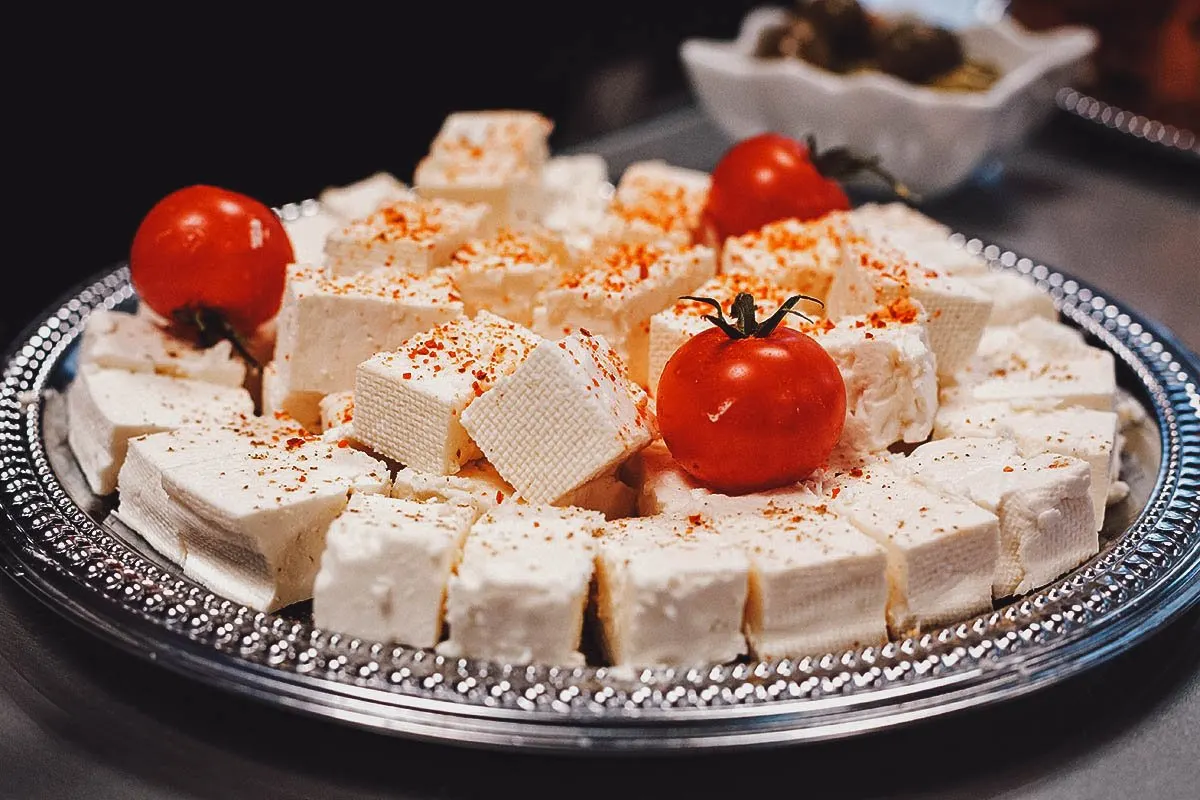
Photo by Kisa_Markiza
6. Banitsa
No list of popular dishes in Bulgaria can be complete without mentioning banitsa, a Bulgarian national dish. It refers to a traditional Bulgarian pastry that’s prepared by layering sheets of buttered phyllo pastry and adding eggs and various sweet or savory fillings such as apples or traditional Bulgarian cheese.
Served hot or cold, banitsa is commonly served for breakfast or as a snack. It’s also a Bulgarian tradition to include lucky charms in the pastry on certain occasions such as New Year’s Eve. These may include coins or small objects that symbolize anything from good health to prosperity throughout the year.
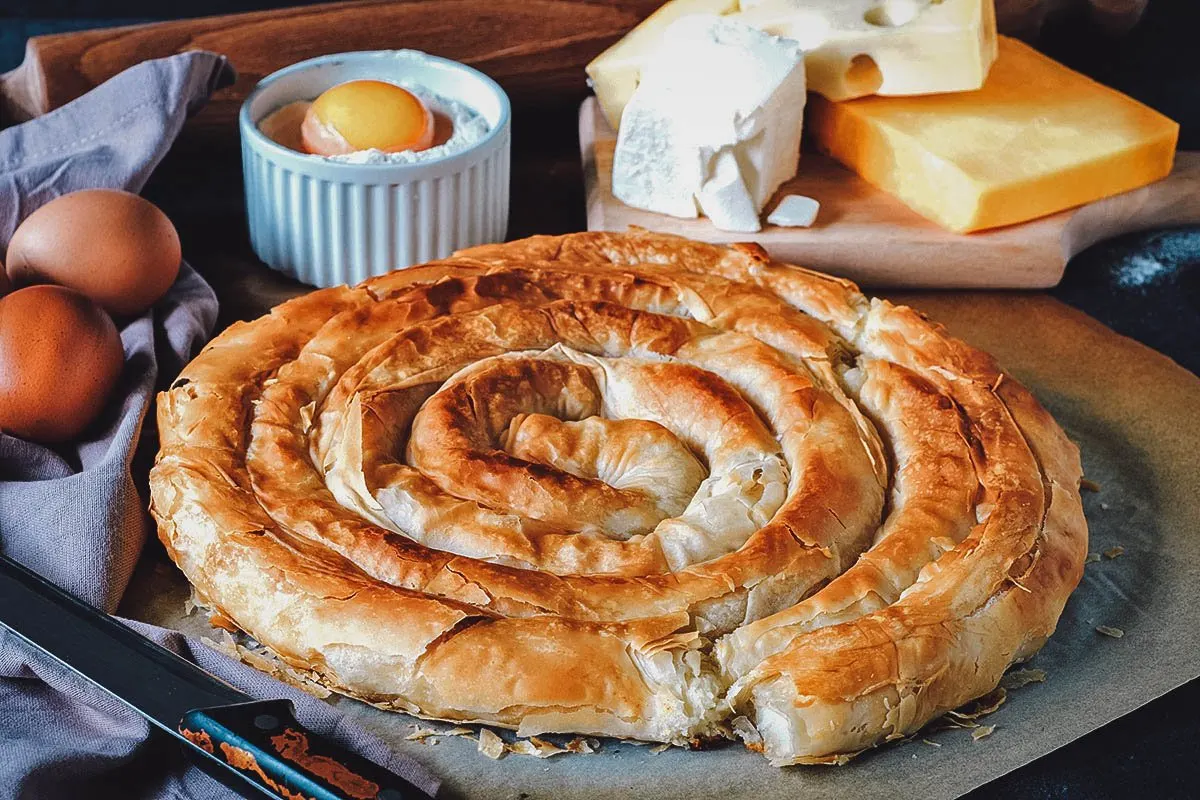
Photo by uroszunic
7. Lyutenitsa
Lyutenitsa (or ljutenica, lutenica) is a type of vegetable relish or chutney commonly consumed in Bulgaria, Serbia, and Macedonia. It can be smooth or chunky, spicy or mild, and is typically made with hot peppers, eggplant, tomatoes, carrots, garlic, vegetable oil, and seasonings. You can think of it as the Bulgarian version of ajvar, a similar relish popular in Balkan cuisine.
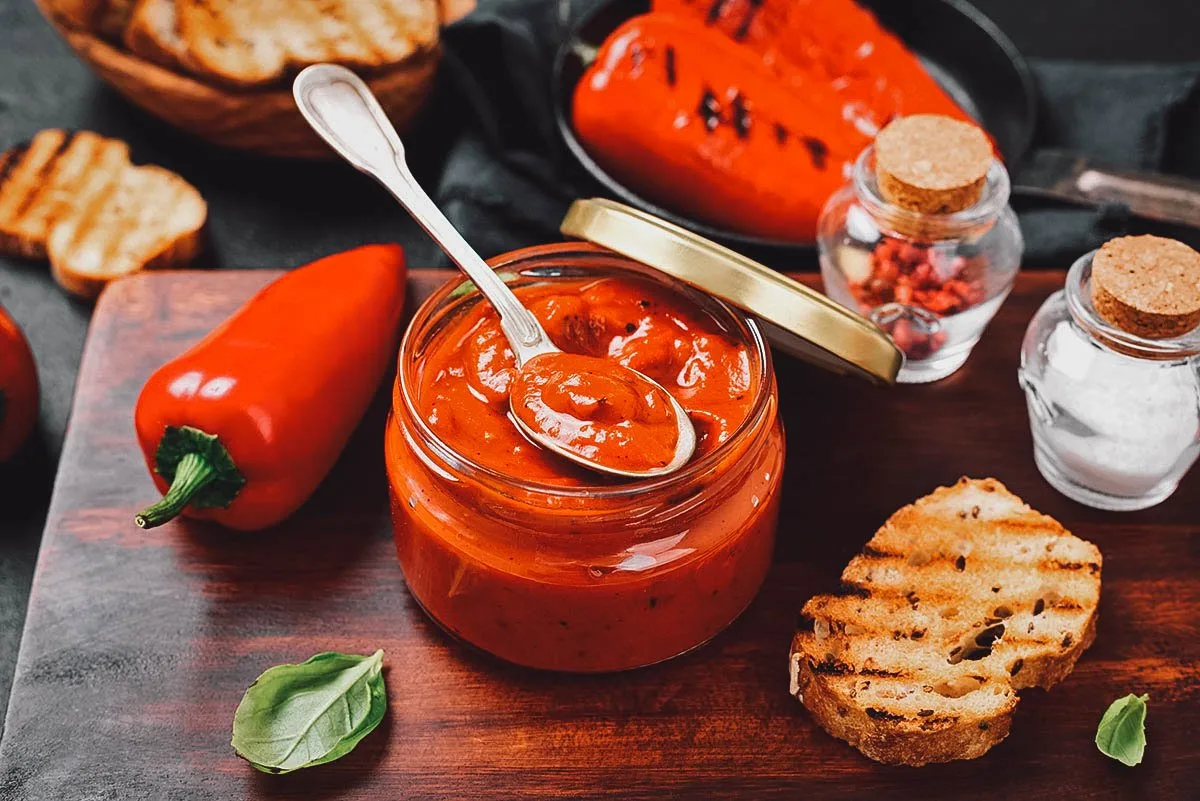
Photo by Alex33#33
SOUPS / STEWS
8. Tarator
On a hot summer day in Bulgaria, there’s nothing more refreshing than a bowl of tarator. It’s a cold cucumber soup made with Bulgarian yogurt, cucumbers, walnuts, oil, garlic, and dill. Prep time is just around 10 minutes without the need for cooking, making it an easy Bulgarian recipe to follow.
The soup is best made at least 30 minutes before serving so that it can cool in the fridge. Since cold water is also mixed in to dilute the yogurt and make sure it’s lump-free, even ice cubes can be added. Other variations of tarator exist across Southeast Europe and the Middle East, making it a popular cold soup dish in the region.
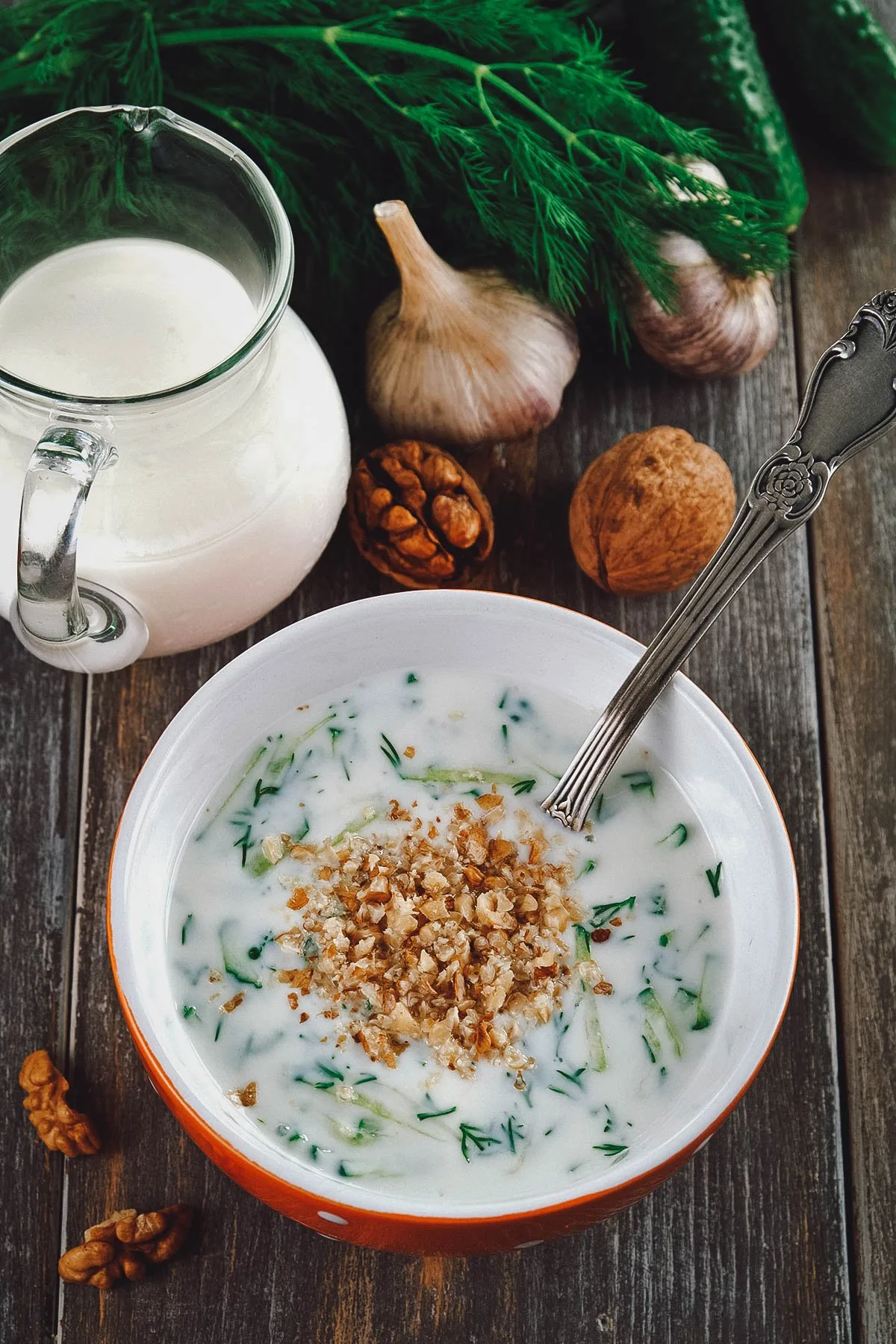
Photo by minadezhda
9. Bob Chorba (Traditional Bulgarian Soup)
Pronounced “bop,” which means bean, this centuries-old Bulgarian recipe for bean soup has been a staple in the country partly due to the high volume of bean production. This Bulgarian dish has many variations, with the “Monastery” or vegetarian version being the most popular.
The basic ingredients of this delicious traditional Bulgarian food include dry beans, onions, tomatoes, peppers, carrots, and mint. Other alternatives can have anything that’s available such as meat, sausages, and other bean varieties. It’s an ideal dish that can go with a main course, but it can stand on its own as a filling meal for hungry Traveleaters on a budget.
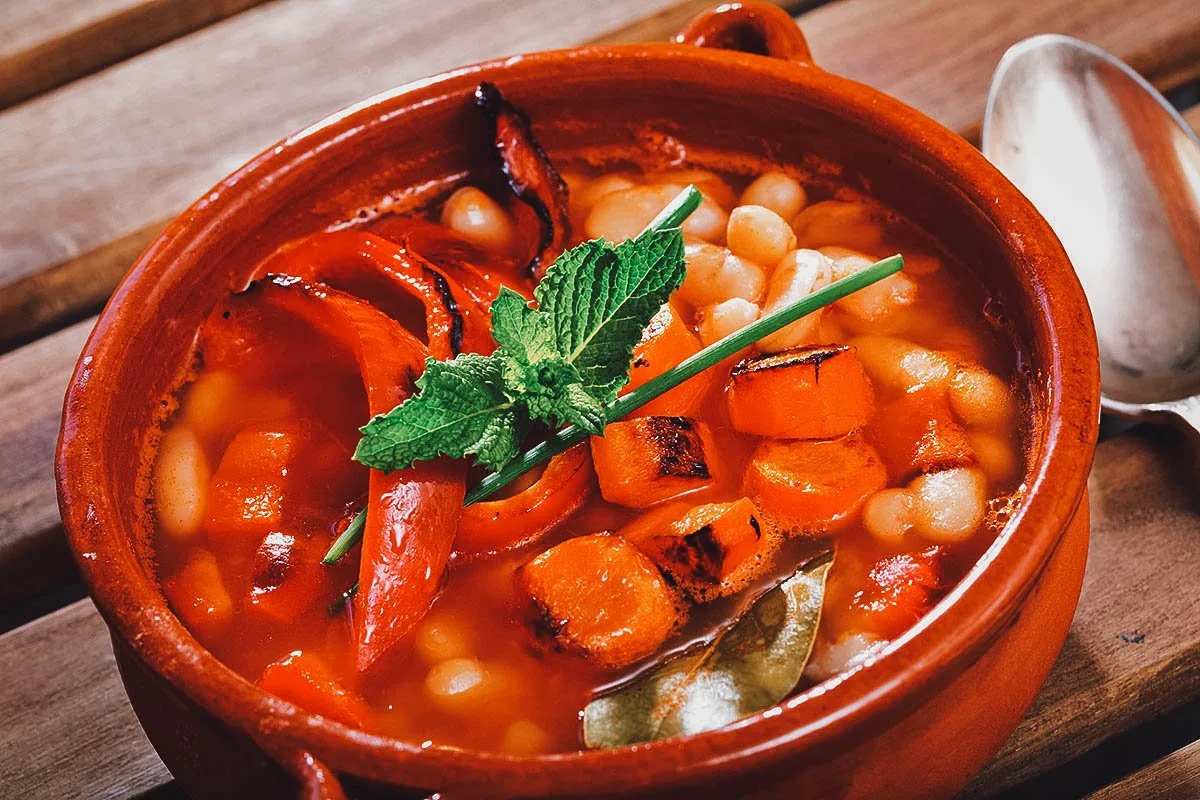
Photo by Jim_Filim
10. Supa Topcheta
Supa topcheta refers to a type of meatball soup. There are probably as many recipes for this comforting Bulgarian dish as there are Bulgarian cooks, but there are always three constants – vegetables (typically carrots, onions, and celery), meatballs made with ground meat (usually a combination of pork and beef), and a thickening agent consisting of yogurt and egg yolks.
Depending on the cook, other ingredients may be added to the soup like rice, noodles, and potatoes. Before serving, some cooks like to give it a spritz of fresh lemon juice for some brightness and acidity.
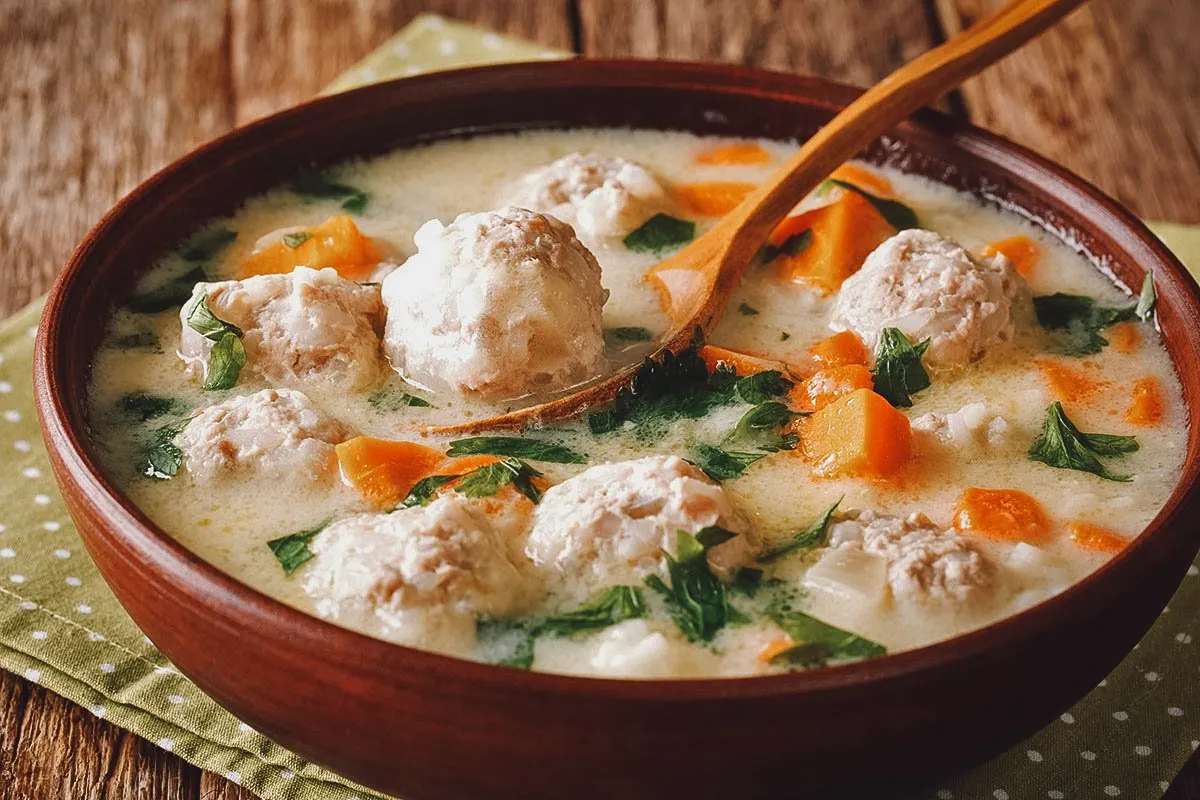
Photo by lenyvavsha
11. Shkembe Chorba
Another delicious soup entry on this list is a traditional Bulgarian meal called shkembe chorba or tripe soup. While it’s known as a hangover remedy and eaten the next day after a long night of revelry, it’s also a nice meal or bar chow that goes well with cold beer or rakia.
To make this Bulgarian tripe soup, the tripe is boiled for hours to soften the meat. It’s then cut into small pieces and put back in the broth where it’s seasoned with ground red paprika, flour, milk, garlic, hot red peppers, and red wine vinegar. Other variations use meats such as offal or intestine, which is standard nose-to-tail eating practice in the Slavic and Balkan regions, as well as Turkish and Middle Eastern cultures.
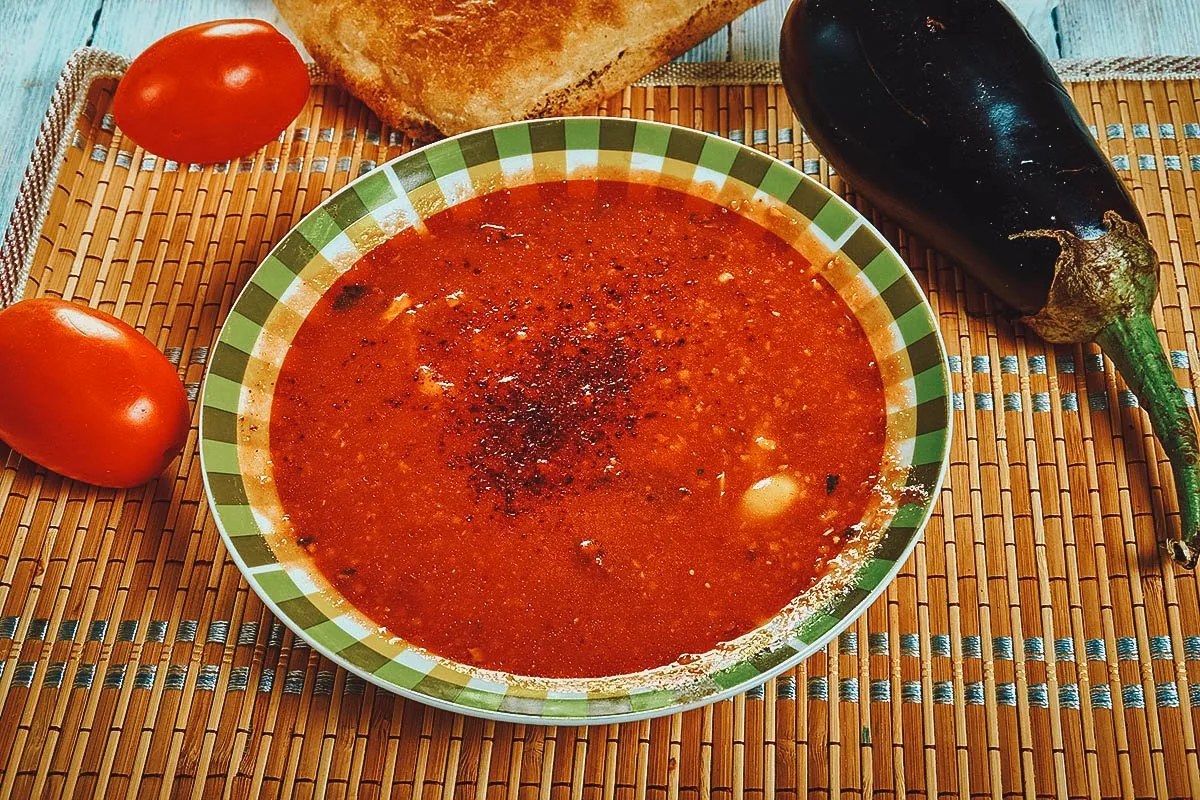
Photo by fanfon
12. Kavarma
The humble stew is one of the best examples of slow food culture worldwide. Many countries have their own stew dish to be proud of, and Bulgaria is no different.
Kavarma is a slow-cooked meat and vegetable stew that’s recognized as long-standing traditional Bulgarian food. The dish makes use of a ceramic or clay pot called a gyuvetche or gyuveche. Either a cast iron casserole, Dutch oven, or slow cooker works fine too if one isn’t available.
Beef, chicken, or pork are the proteins of choice when preparing kavarma, along with fresh vegetables such as carrots, leeks, mushrooms, peppers, tomatoes, and onions. Wine is also added for more flavor as the sauce is reduced. The resulting dish is a tender, meaty, and tasty main course that’s great with crusty bread to soak in the flavorful sauce.
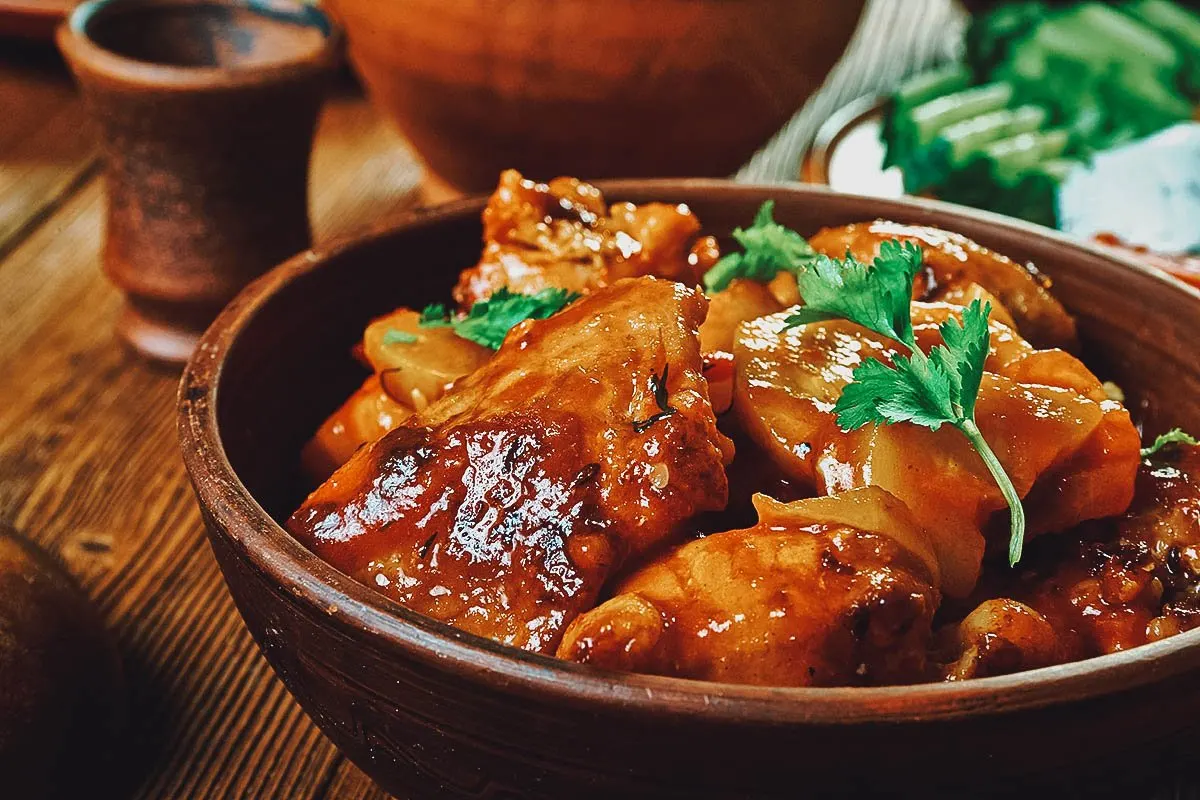
Photo by fanfon
MEAT / MAINS
13. Sarmi
Sarmi is a traditional Bulgarian dish made of rolled cabbage or vine leaves stuffed with a mixture of minced meat, rice, and various spices then poached in water or tomato sauce. It’s a popular dish served during Christmas Eve, often with a side of yogurt.
Stuffed cabbage dishes could be traced back to ancient Middle East, before spreading to Eastern Europe through thriving trade routes and ethnic migrations. Today, sarmi goes by different names depending on the country. The minced meat, spices, and other stuffing may vary, but the dish stays generally the same: a delicious cabbage leaf stuffed with meaty goodness.
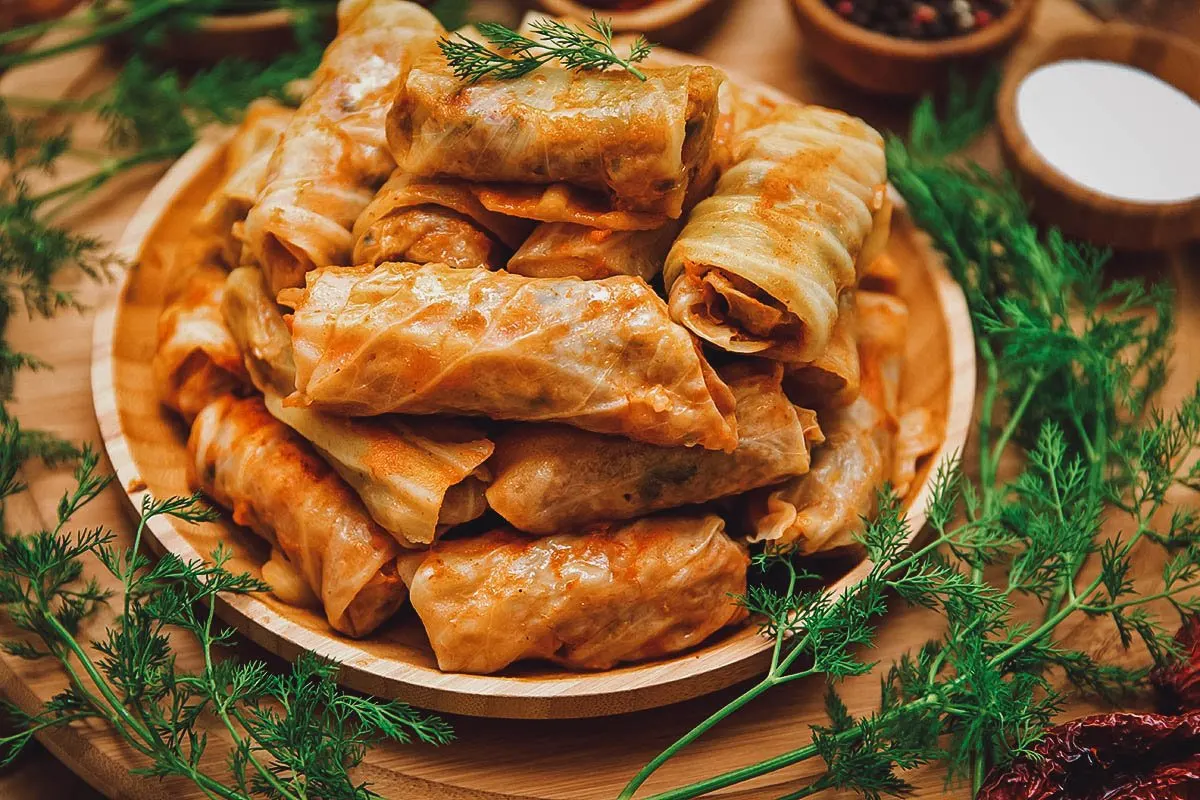
Photo by PantherMediaSeller
14. Moussaka
Traditional Bulgarian moussaka is a baked dish made with potatoes, ground beef, and vegetables such as carrots, celery, red bell peppers, garlic, and onions. Tomatoes are also added for that nice touch of acidity. Moussaka is to the Bulgarians what lasagna is to the Italians, making it a delicious and hearty traditional dish and a perfect comfort food.
Depending on the region, moussaka is prepared in slightly different ways. The more popular variant is Greek or Mediterranean moussaka made of eggplant rather than potatoes. The Bulgarian kind is topped with yogurt sauce rather than bechamel, but most are prepared similarly through layering the ingredients and topping the dish with the sauce before baking it in an oven.
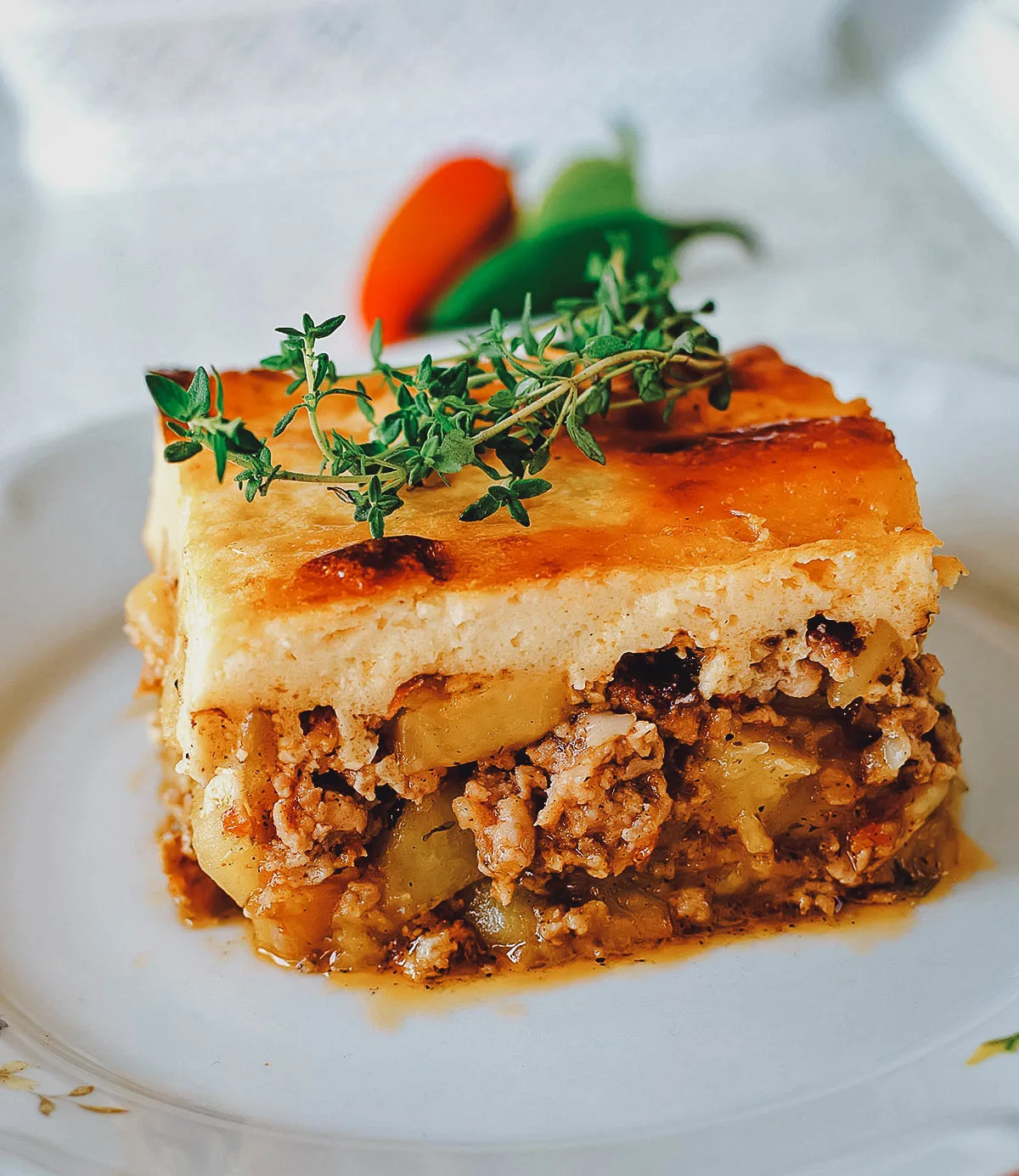
Photo by yanzappa
15. Lukanka
If you like sampling different sausages when you travel, then you need to try lukanka, a type of salami unique to Bulgarian cuisine. Similar to sujuk but stronger in flavor, it refers to a flattened cured sausage made with a mixture of pork and veal seasoned with cumin, salt, and black pepper.
To make lukanka, the seasoned meat mixture is stuffed into a dried cow’s intestine and then hung to dry for about 40-50 days. As it dries, the sausage is pressed to give it its characteristic flat form. When ready, the sausage is sliced thinly and served cold, usually as an appetizer.
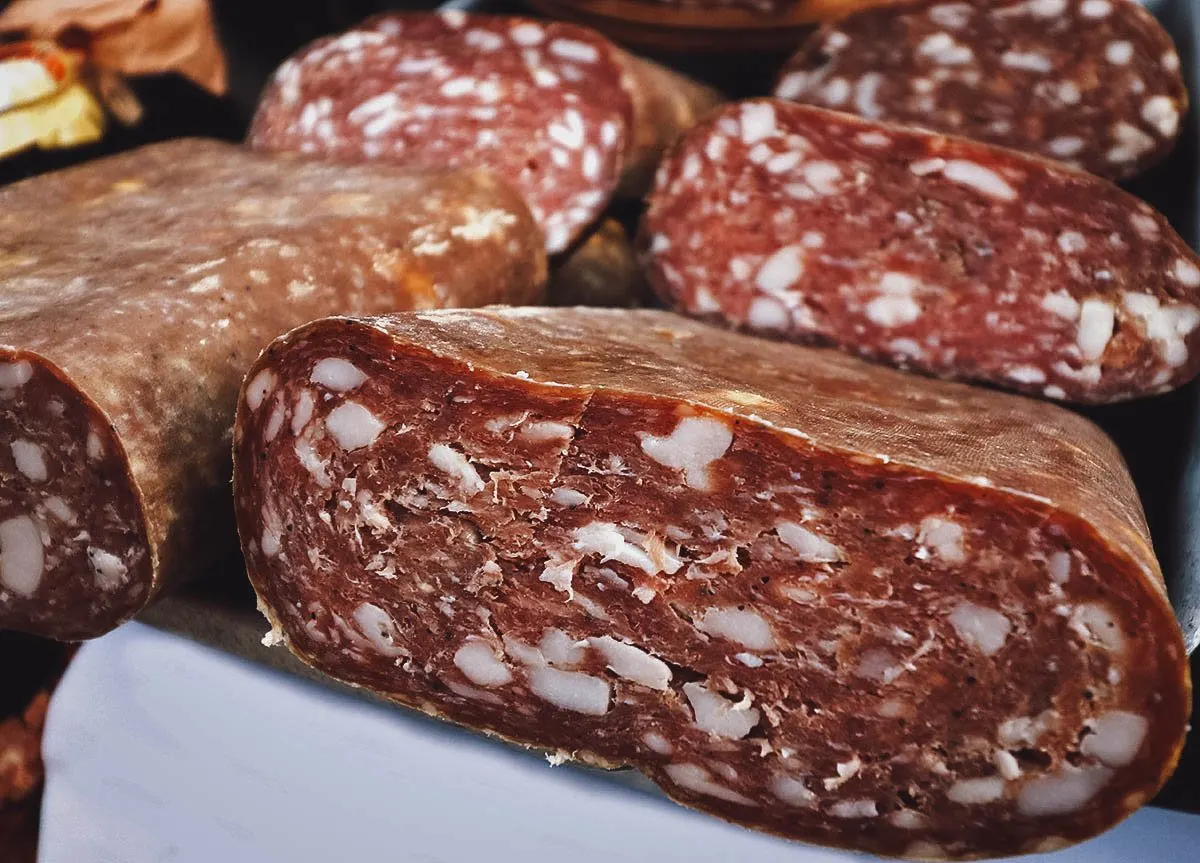
Photo by GEORGID
16. Kufte
Outdoor barbecues will always have a global appeal, so it comes as no surprise to have kufte (or kufteta in the plural sense) on this Bulgarian food list.
Kufte is basically a meat patty made of ground pork meat, veal, beef, or a combination of any of the three. It’s seasoned with salt, pepper, cumin, onions, and parsley. Savory can also be added for a nice flavor boost, and some add pepper flakes for a touch of heat.
The meat patties can be baked, fried, or grilled to perfection, and served with bread and baked rice, or a side of shopska salad or french fries with Bulgarian white cheese.
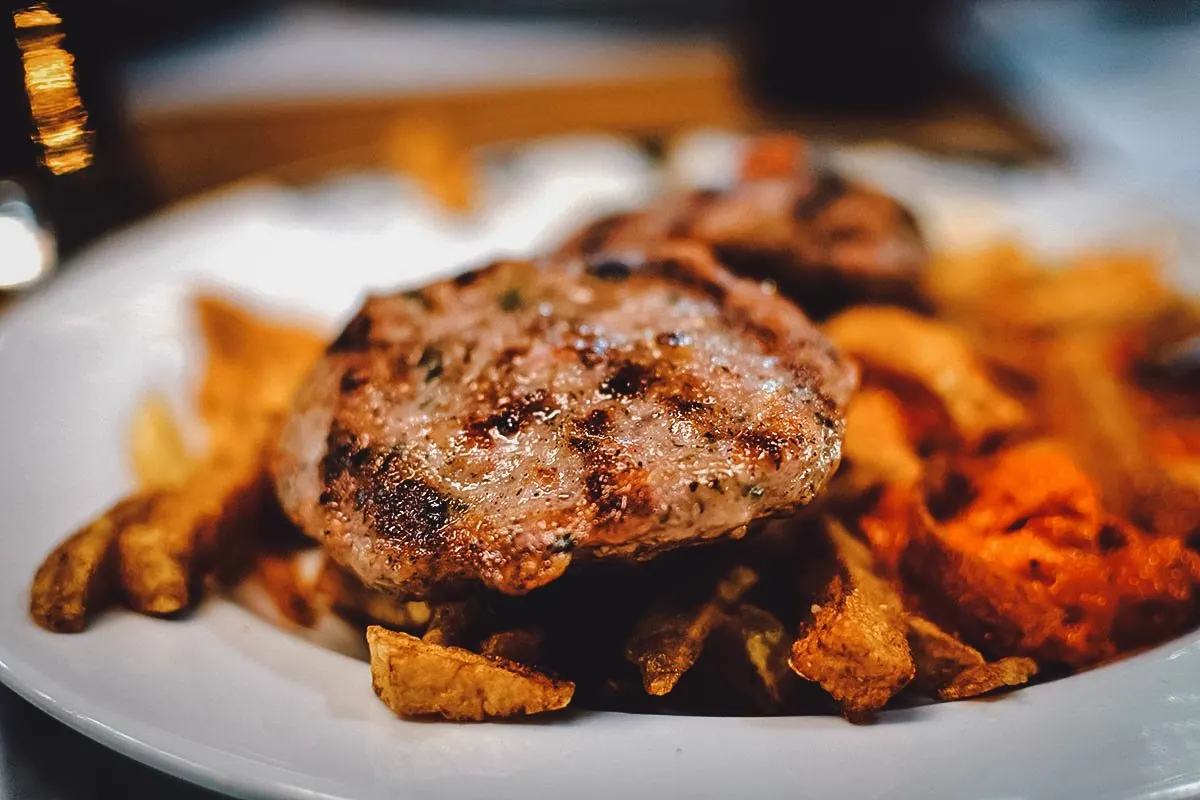
Photo by Cpifbg13
17. Kebapche
Kebapche is a classic Bulgarian dish made with grilled minced meat seasoned with spices. Long and cylindrical like a hot dog, it’s typically made with a combination of pork and beef seasoned with cumin, black pepper, and salt.
Always grilled, kebapche is often topped with grated sirene and served with a side of lyutenitsa and french fries.
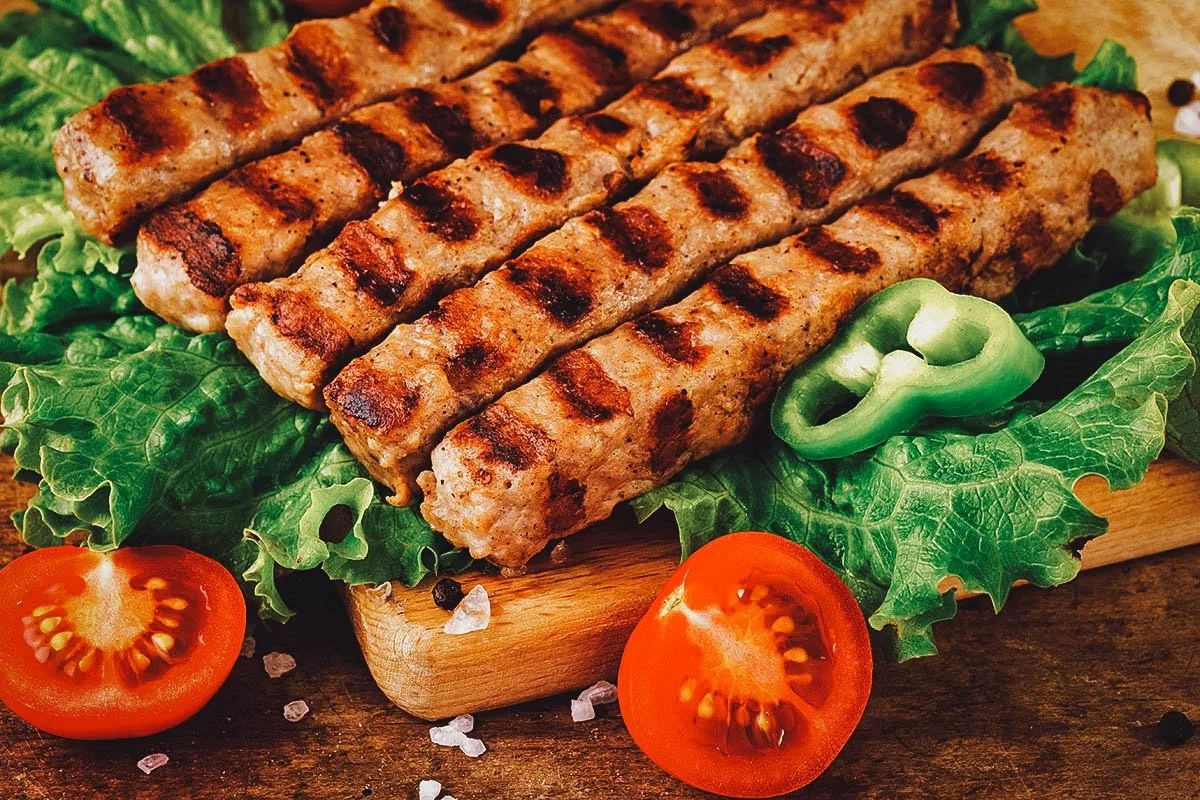
Photo by elcabron
18. Meshana Skara
For those who can’t get enough of grilled meat and Bulgarian food, meshana skara is perfect for hungry carnivores. It’s a mixed grill dish full of various meats and sides, and should include a kufte, a pork steak, a pork meat on a skewer, and a kebapche, with fries, bean salad, chopped onions, and lyutenitsa. This loaded meat platter is best shared with friends or family, and goes well with a few rounds of beer or shots of rakia.
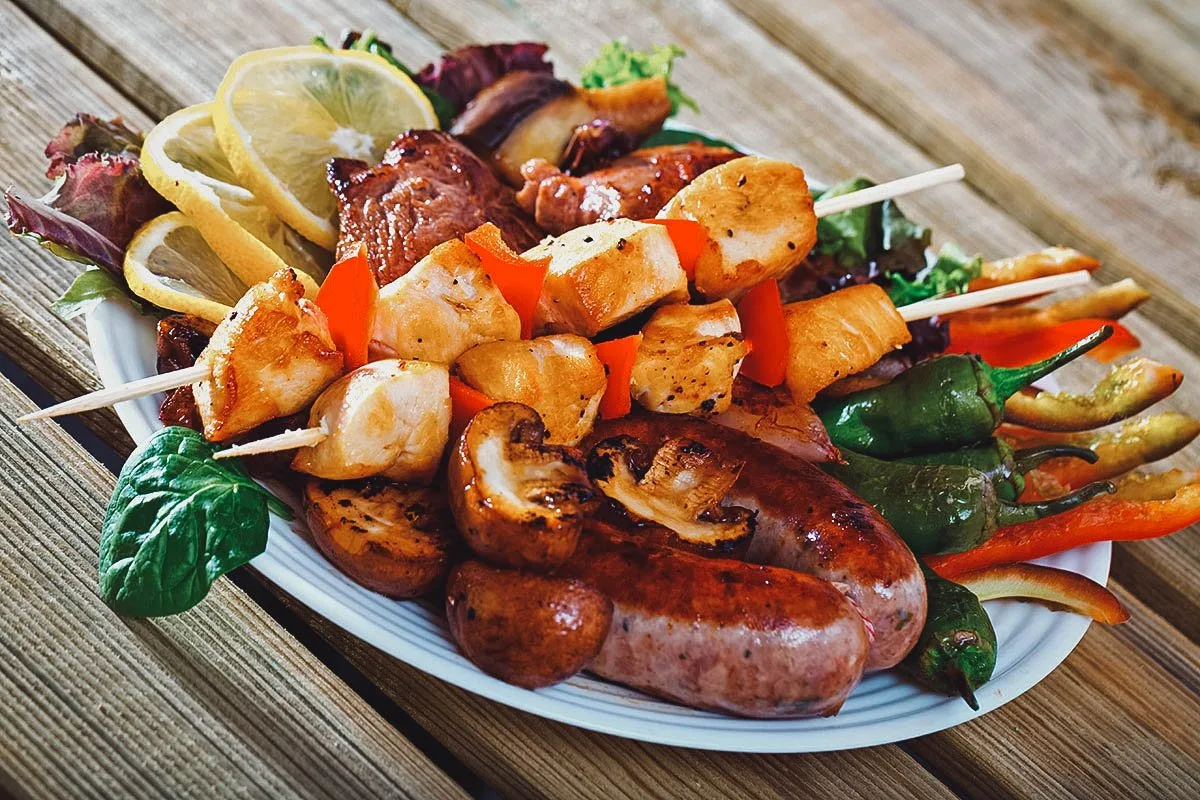
Photo by Jim_Filim
DESSERTS
19. Tikvenik
Nothing ends a satisfying meal better than tikvenik, one of the most popular Bulgarian desserts. It’s a sweet Bulgarian version of banitsa made of pumpkin (tikva) filling and warm cinnamon encased in a crisp phyllo pastry. It’s lightly dusted with powdered sugar before serving.
Tikvenik is often served during the holidays, particularly during Christmas Eve, but could also be enjoyed any time of the year for breakfast, or as a snack. It’s best paired with a glass of yogurt.
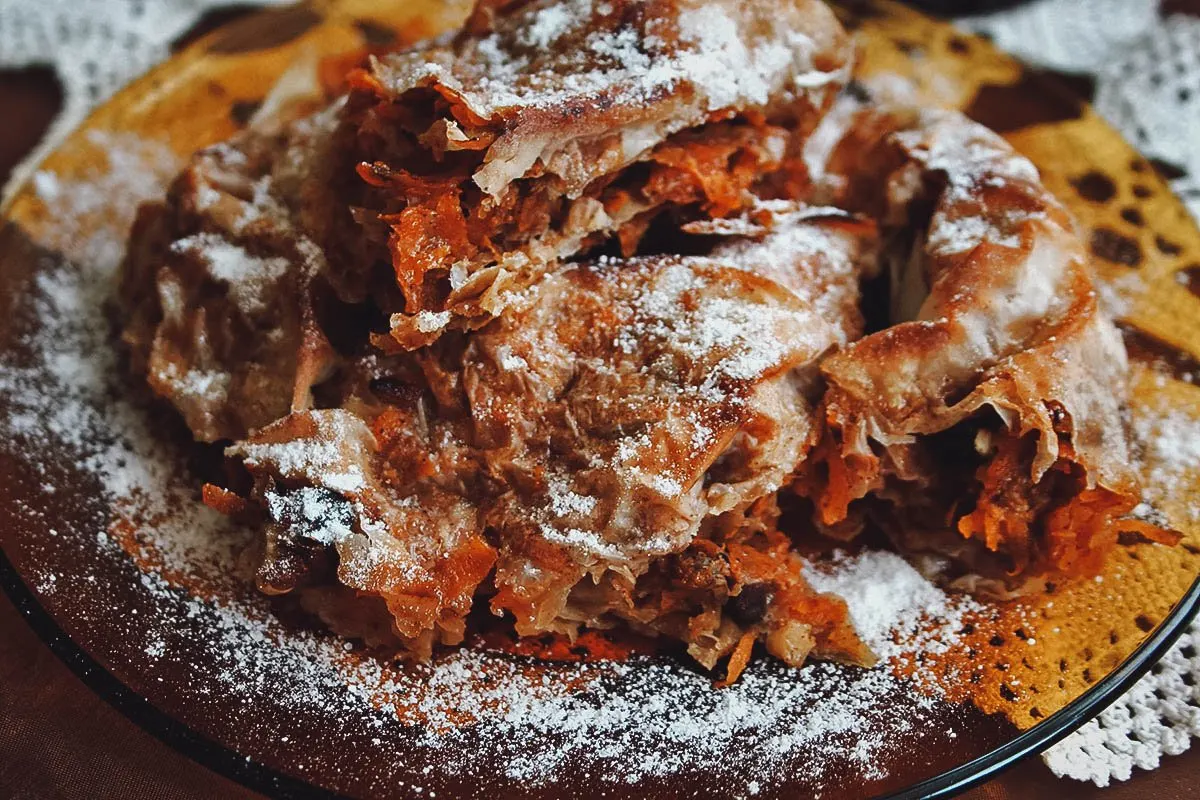
Photo by cherydi
20. Palachinka
Palachinka is essentially Bulgarian pancakes or crepes. They are made thin and rolled with simple fillings such as butter and honey, sprinkled with powdered sugar, then topped with strawberries. And just like pancakes, it can also be served with other fillings such fruit jam or fruit slices, cheese, or plain powdered sugar.

Photo by Jim_Filim
BULGARIAN FOOD TOURS
It goes without saying that no one knows Bulgarian food better than a local, so what better way to experience the best food in Bulgaria than by going on a guided tour? A knowledgeable local will lead you to the city’s best restaurants and markets so all you need to do is follow, listen, and eat. Check out Get Your Guide for a list of food and drinking tours in Sofia and other destinations in Bulgaria.
FINAL THOUGHTS ON BULGARIAN CUISINE
Getting a head start has its advantages, and being the oldest country in the continent has sparked a rich culture and a diverse yet evolved Bulgarian cuisine. With a fascinating mix of Mediterranean, European, and Middle Eastern influences, Bulgarian food has been elevated to dishes that are guaranteed to surprise even the unfamiliar palate.
Disclosure
Some of the links in this article on Bulgarian foods are affiliate links. If you make a booking or reservation, then we’ll earn a small commission at no added cost to you. We only recommend products and services that we use ourselves and firmly believe in. We really appreciate your support as it helps us make more of these free travel and food guides. Thank you!
Cover photo by uroszunic. Stock images via Depositphotos.


Savan Bisercic
Thursday 29th of June 2023
Kačkavalj, Cicvara, Popara, Pura, Sataraš, Ajvar, Maune, Grašak, Pasulj, Piroške... Srpska Salata, Kiselica, Zeljanica, Makova Pita, Ljevača, Tarana, Rolovana Prasetina Divlja Čorba...
T...A...
Saturday 18th of February 2023
Sorry, but why many of names are just Turkish? Sarmi is Sarma, Kebapche is Kebap, Mousakka is Musakka, Shkembe Chorba is İşkembe Çorba, Lukanka is sucuk or pastırma, Kavarma is Kavurma, Kufte is Köfte in Turkish. And nearly the same things as we did...
JB & Renée
Monday 20th of February 2023
Probably because food crosses borders, transforms, and is absorbed into other cultures. Travel enough and you see it happen all over the world.
The Bulgarian Chef
Tuesday 7th of June 2022
We have many different dishes. This is nothing, and you forgot to tell where lactobacilli comes from. The recipe for yogurt is unique, the bacterium is extracted in a unique way. This is a recipe for prolonging life. Scientists have proven that the Bulgarian bacteria in our milk prolongs life.
Hamza khan
Wednesday 29th of June 2022
@The Bulgarian Chef, thanks for uploading the best dishes of Bulgarian traditions.so when I visit to Bulgaria I will try some of them.